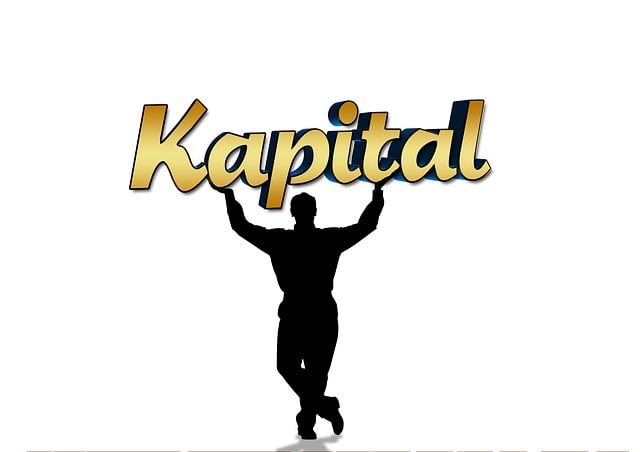Debt restructuring and debt review are distinct strategies for managing finances. Debt review offers a snapshot of your financial situation, while debt restructuring is a proactive process that transforms it by renegotiating terms with creditors, extending repayment periods, or consolidating debts. Restructuring provides long-term relief and control over overwhelming debt burdens, whereas a review helps identify optimization opportunities and make informed decisions about strategies like restructuring. Choosing between them depends on factors such as debt amount, interest rates, and payment ability, with review consolidating multiple debts and restructuring easing high-interest rate burdens.
Debt can be a burden, but understanding your options is key to financial freedom. This comprehensive guide delves into the nuances of Debt Restructuring and Debt Review, two powerful strategies for managing overwhelming debt. We explore what each entails, their key differences, and how to choose the right approach for your unique situation. Take control of your finances and learn which method could help you breathe easy again. Discover the transformative power of understanding Debt Restructuring Vs Debt Review.
- Understanding Debt Restructuring: A Deep Dive
- The Ins and Outs of Debt Review: What to Expect
- Key Differences Between Restructuring and Review
- Strategies for Choosing the Right Debt Management Approach
Understanding Debt Restructuring: A Deep Dive

Debt restructuring is a strategic process that involves reorganizing an individual or business’s debt obligations to improve overall financial health and sustainability. It goes beyond simply reviewing debts; it’s about renegotiating terms, adjusting interest rates, extending repayment periods, or even consolidating multiple debts into one manageable loan. This approach is particularly appealing when faced with overwhelming debt burdens that cannot be easily resolved through traditional debt management methods.
When considering debt restructuring versus debt review, it’s crucial to understand that while a debt review helps assess the current financial situation and identifies potential areas for improvement, restructuring takes it a step further by implementing concrete changes to make repayments more feasible. Restructuring can involve negotiations with creditors or lenders, leading to revised terms tailored to the debtor’s capabilities, offering a fresh start and long-term relief from financial strain.
The Ins and Outs of Debt Review: What to Expect

When it comes to understanding debt restructuring vs. debt review, it’s crucial to know what each process entails and what to expect. A debt review is a preliminary step often undertaken before making any significant changes to your debt. It involves sitting down with a financial expert or using online tools to meticulously analyze your current debt situation, including interest rates, minimum payments, and repayment terms. This comprehensive evaluation helps you gain clarity on the ins and outs of your debts, enabling informed decisions about potential strategies like debt restructuring.
During a debt review, you can expect to uncover areas where your repayments might be optimized, negotiate lower interest rates, or identify debts that could be consolidated for better management. It’s a chance to understand your financial obligations and explore options that align with your goals, whether it’s becoming debt-free faster or simply making payments more manageable. This process is an essential first step in navigating the complex landscape of debt restructuring vs. debt review, helping you make strategic choices tailored to your unique financial circumstances.
Key Differences Between Restructuring and Review

When it comes to managing debt, understanding the nuances between debt restructuring and debt review is crucial for making informed financial decisions. While both options aim to alleviate debt burden, they operate on different fronts. Debt restructuring involves altering the terms of your existing debt, such as adjusting interest rates, extending repayment periods, or even consolidating multiple debts into one. This approach is ideal when a borrower is facing insurmountable debt and needs a fundamental change in their repayment plan.
On the other hand, debt review focuses on evaluating and analyzing the current financial situation to identify areas of improvement. It doesn’t alter existing debt but rather helps borrowers create a realistic budget, negotiate with creditors, and explore alternative payment methods. A debt review is beneficial for those who may be falling behind on payments but still capable of making them with some adjustments and guidance.
Strategies for Choosing the Right Debt Management Approach

When deciding between debt restructuring and debt review, it’s crucial to understand your financial goals and the nature of your debt. Debt Restructuring involves altering the terms of your existing loans, such as reducing interest rates or extending repayment periods. This approach is ideal when you’re facing insurmountable debt with high-interest rates, making it difficult to make ends meet. On the other hand, Debt Review entails a thorough analysis of your financial situation by a credit counseling agency. They work with creditors on your behalf to negotiate lower interest rates, fee waivers, or more favorable payment terms.
Choosing between these strategies depends on factors like debt amount, interest rates, and your ability to make consistent payments. For instance, if you have multiple debts with varying maturity dates, debt review can help streamline repayment by consolidating them under one manageable plan. Conversely, if you primarily need relief from high-interest rates, debt restructuring could be the better option. It’s essential to compare these approaches based on your unique financial circumstances to make an informed decision between debt restructuring vs. debt review.
Debt Restructuring and Debt Review are both powerful tools in managing financial obligations, each with unique benefits and considerations. Understanding these concepts is crucial for making informed decisions regarding your debt. By analyzing your financial situation, you can determine whether restructuring or reviewing your debts is the optimal strategy to achieve long-term financial health. This comprehensive guide highlights the differences and provides insights to help individuals navigate their options effectively, ultimately ensuring a brighter financial future.







